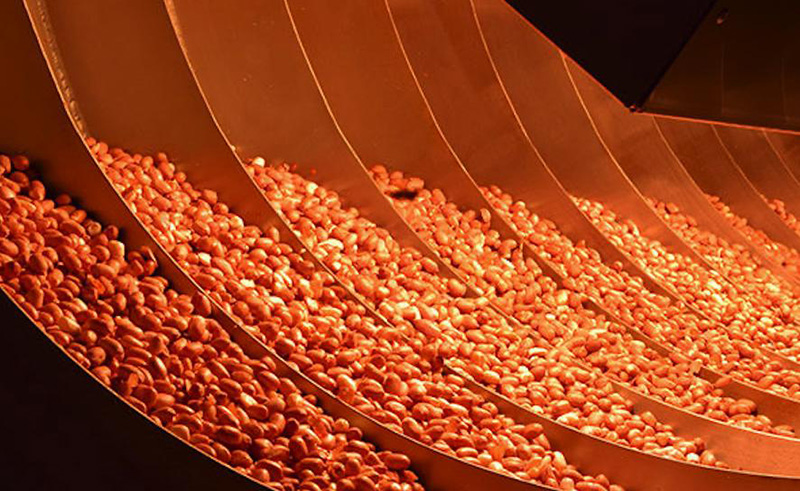For safe storage, the moisture content (MC) in the normally harvested corn is higher than the required level of 12% to 14% wet basis (w.b.). In order to reduce the MC to a safe storage level, it is necessary to dry the corn. There are several ways to dry corn. Natural air drying in the tank occurs in a dry area from 1 to 2 feet thick that slowly moves up through the bin.
In some natural air drying conditions, the time required for the corn to dry completely may cause mold growth in the grain, leading to the production of mycotoxins. To circumvent the limitations of slow, low temperature air drying systems, some processors use high temperature convection dryers. However, the energy flux associated with high temperature dryers requires corn kernels to be exposed to high temperatures for extended periods of time before complete drying is complete. Although hot air can almost completely dry the corn for storage in a safe MC, the heat flux associated with the process is not sufficient to inactivate some harmful, heat-resistant mold spores such as Aspergillus flavus and Fusarium oxysporum. High temperatures can also cause the pores to shrink and almost close, resulting in crust formation or "surface hardening", which is often undesirable. In practice, multiple passes may be required to reduce heat loss. However, the more times the drying is done, the greater the energy input required.
For those and other problems the ODEMADE Infrared Drum IRD is made. With a minimum of process time, high flexibility, and lower energy consumption compared to conventional dry-air systems, our infrared technology offers a real alternative.

Infrared (IR) heating of the corn, has the potential to rapidly dry the corn while purifying it without adversely affecting the overall quality. Maximize production and minimize drying energy without affecting the overall quality of the corn. Freshly harvested corn with an initial moisture content (IMC) of 20%, 24% and 28% wet basis (w.b.) was dried using a laboratory scale infrared batch dryer in one pass and two passes. The dried samples were then tempered at 50 ° C, 70 ° C and 90 ° C for 2, 4 and 6 hours. The results show that as the tempering temperature and tempering time increase, the removal of moisture increases, and the water treated by one pass is higher than twice; a similar trend is observed in reducing the mold load. For the range of processing conditions studied, the one-pass mold load reduction ranged from 1 to 3.8 log CFU / g, and the two passes were 0.8 to 4.4 log CFU / g. The infrared drying treatment of corn was expanded with an IMC of 24% w.b. The IR intensities are 2.39, 3.78 and 5.55 kW / m2, and the corn can be dried to a safe water content (MC) of 13% (wb) for only 650 s, 455 s and 395 s; the corresponding mould increases with increasing strength The load reduction ranged from 2.4 to 2.8 log CFU / g, 2.9 to 3.1 log CFU / g and 2.8 to 2.9 log CFU / g (p > 0.05). This work suggests that IR drying of corn is expected to be a fast drying method with the potential benefits of microbial decontamination of corn. This can help producers solve mold-related problems such as mycotoxin contamination.
How is Infrared working?
• the heat is applied directly to the material by infrared radiation
• the heating works from the material particles inside out
• the evaporating moisture is carried out of the product particles
The machine's rotating drum ensures complete mixing of the raw materials and eliminates the formation of nests. This also means that all foods are subject to uniform illumination.
In some cases, it can also reduce pollutants such as pesticides and ochratoxin. Inserts and eggs are usually found in the core of the product granules, making them particularly difficult to eradicate.
Food safety due to rapid heating of product particles from the inside out - IRD destroys animal proteins without damaging plant proteins. Inserts and eggs are usually found in the innermost core of the product granules, making them particularly difficult to eradicate. Food safety due to rapid heating of product particles from the inside out - IRD destroys animal protein without damaging plant protein
Advantages of Infrared Technology
• low energy consumption
• minimum residence time
• immediate production after start of system
• high efficiency
• gentle material handling
Post time: Feb-24-2022

